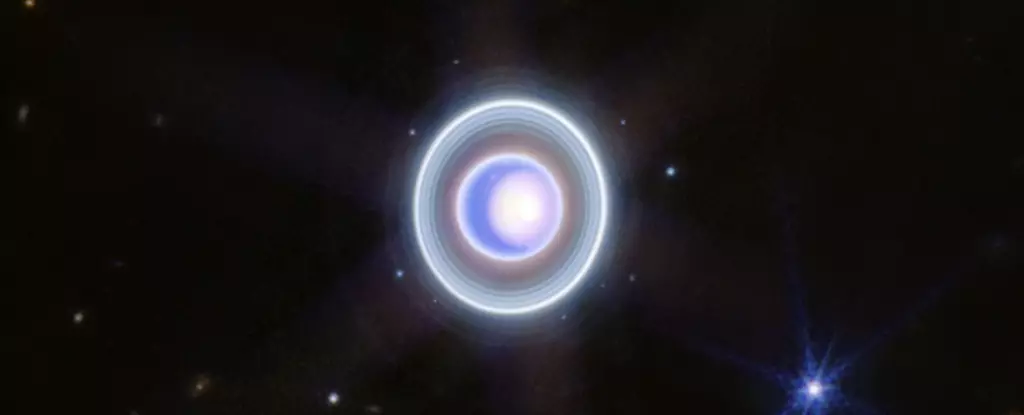In a surprising turn of events, astronomers have recently discovered three new moons orbiting Uranus and Neptune. These findings shed light on the often overlooked outer ice giant planets of our Solar System, bringing their moon counts to 28 and 16, respectively. This discovery highlights the importance of continued exploration and observation of these distant worlds.
The three newly discovered moons have unique characteristics that set them apart from previously known satellites. They have wide, eccentric, and inclined orbits, making them challenging to detect with ground-based telescopes. These orbits are indicative of a capture origin, suggesting that they were snared by the planets’ gravity and are now locked in peculiar orbital dances.
The first of the new moons, tentatively named S/2023 U1, was spotted around Uranus in November 2023. This tiny moon, measuring only 8 kilometers across, has an orbital period of 680 days, making it the smallest among Uranus’ moons. On the other hand, the brighter of the two Neptunian moons, provisionally designated S/2002 N5, has a diameter of 23 kilometers and an orbital period of 9 years. Lastly, the smaller and fainter new Neptunian moon, named S/2021 N1, measures 14 kilometers across and orbits Neptune every 27 years.
Read More: The Fascinating Phenomenon of Superradiance in Quantum Optics
The discovery of these new moons suggests that Uranus and Neptune possess outer moon populations similar to Saturn and Jupiter, hinting at a common method of moon acquisition among the giant planets in our Solar System. Despite their distance and relative obscurity, Uranus and Neptune have proven to harbor a diverse array of moons, enriching our understanding of these enigmatic worlds.
The grouping of the new moons into sets with similar orbits raises intriguing questions about their origins. The similarities in orbital paths suggest that these moons may have originated from larger bodies that were captured by the planets’ gravitational pull before breaking apart into individual satellites. This hypothesis opens up the possibility of even smaller, unresolved moons within these groupings, highlighting the complexity of moon formation and evolution.
The discovery of three new moons orbiting Uranus and Neptune represents a significant advancement in our exploration of the outer reaches of the Solar System. These findings underscore the need for further research and potential missions to study these distant worlds and their intricate moon systems. By continuing to unravel the mysteries of Uranus and Neptune, we can gain valuable insights into the broader dynamics of our cosmic neighborhood.


Leave a Reply